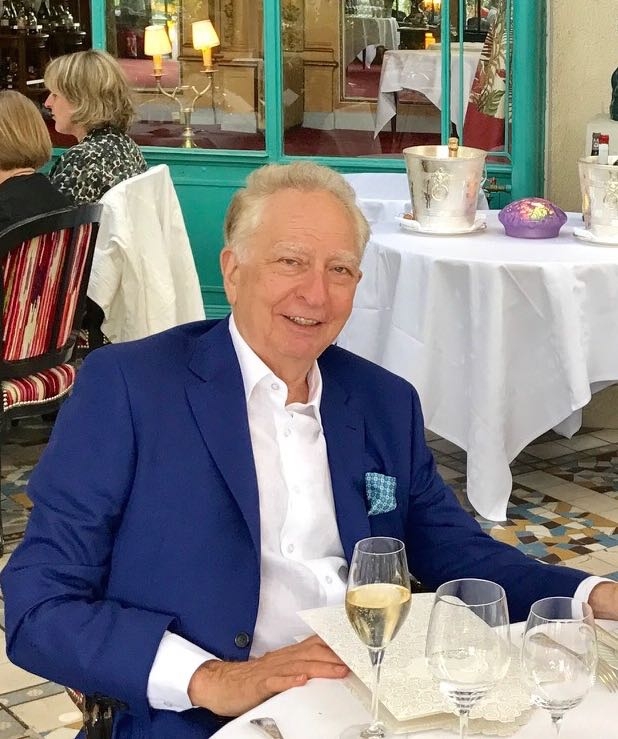Terrorist Omar Mateen
The horrific terrorist attacks in Orlando—and before that in San Bernardino, Brussels, and Paris-- exploded out of nowhere with the same terrifying destructive force as a missile strike from an almost invisible U.S. drone.
There is no way, of course, that ISIS could come any where near matching America’s martial sophistication nor its mammoth $600 billion annual military budget. Instead, following in Osama bin Laden’s steps, ISIS has developed its own very low-budget but devastating weapon: Asymmetric warfare of the Internet age.
Being slowly pushed back on the battlefields in Syria, Iraq, and Libya, in May ISIS called on sympathizers around the world to strike at the enemies of the self-proclaimed Islamic Caliphate by launching their own freelance attacks.
ISIS used the social networks to get that message out and inspire would-be terrorists to action. But it’s now leaving the timing and targeting and planning up to the attackers. In the U.S those who would heed ISIS’ call to action have no problem finding the automatic weapons they need to do the job. They’re available at the nearest gun shop.
Orlando is just the latest tragedy. There is no way it will be the last.
At a recent symposium in Paris on “Transnational Jihadism,” experts who have been studying Isis and the young recruits from Europe who have flocked to its ranks, met to exchange their findings. Their consensus was bleak, and should be listened to in the U.S. as well.
As one of France’s leading analysts, Olivier Roy, pointed out, the overwhelming majority of young European who joined ISIS were not long-standing members of Salafist mosques, transformed into fire-breathing jihadists. Most are second and third generation descendents of immigrants, such as Omar Mateem, the Orlando attacker, who had little intense interest in Islam.
They aredisaffected youth drawn to violence, rebellion--drifters, misfits, delinquents, petty criminals, prison converts to Islam. They had found no place in their respective European societies, and saw only a bleak, aimless future ahead.
The lure to them of ISIS was not the chance to finally practice their long-standing fundamentalist Islamic beliefs. It was the opportunity to shed their old identity, to embrace a new, valiant role. As one Belgian researcher put it, “Overnight they can transform themselves from a Zero to a Hero.”
They become glorious combatants in the epic struggle to conquer in the name of Allah. .
It’s a cause they really don’t understand. They don’t want to practice Medieval Islam themselves. But that’s beside the point. It’s the heroic role that counts. (Many of the young women who travelled to join ISIS went to become nurses and breed warriors for the brave new Islamic society)
According to the Paris researchers, ISIS is deeply suspicious of these overnight European converts who made it to Syria or Iraq. Unless they had some special skill, most were given minor roles, used as canon fodder or suicide bombers. Thousands of them have now come back to Europe.
At the end of the Paris conference, one might have expected the experts to suggest what actions European governments should take. But there was precious little of that.
The main point made by Olivier Roy was that by lumping orthodox Islamists together with the jihadists, by banning headscarves or the construction of new mosques, or by cracking down in state of emergency excesses, European governments, such as France, play into Isis hands—that is convincing Muslims that they really have no place in European society, that only jihad and Isis offer a solution.
There was not a word during the Paris conference about the extent to which themilitary intervention of the U.S. and its European allies in the Greater Middle East played a key role in fueling Muslim hostility—in effect provoking the very attacks the War or Terror was supposed to protect against.
There was also not a word about the role of Saudi Arabia and Qatar and their massive bankrolling of radical Islamic views across much of the globe over the past decades.
But Europe and America desperately need solutions to this domestic threat.
What was made woefully evident in the Orlando attack is that security agencies in the U.S. find themselves overwhelmed. American-born Omar Matteen, for instance, had been interviewed a couple of times by the FBI before he was taken off the agency’s “terrorist watch list.” The same is true in Europe, where most of the recent attacks were also carried out by people who, at one time or another, had been on such suspected terrorist lists.
But a watch list doesn’t mean you can actually “watch” someone 24 hours a day.
In France, for instance, former French intelligence counterterrorism chief Louis Capriolo estimated that it takes 18-20 officers to keep an eye on any one subject 24 hours a day. Other experts said that number is conservative.
So, we do the math: The FBI’s terrorist watch list had 800,000 entries as of September 2014. Forty thousand of those were U.S. citizens or lawful permanent residents. To keep full-time surveillance on those 40,000 (at 20 agents per suspect) would require roughly 800,000 agents!!
That is more than twenty times the total of all agents and support professionals (35,000) employed by the FBI.
In any case, how on earth do you predict when someone who really is no threat, suddenly, for some reason, flips, decides to take radical action? How do you foresee something like Orlando? And multiply that “soft target” by tens of thousands more across the U.S. And Europe?
How do Hillary and Donald deal with that?

